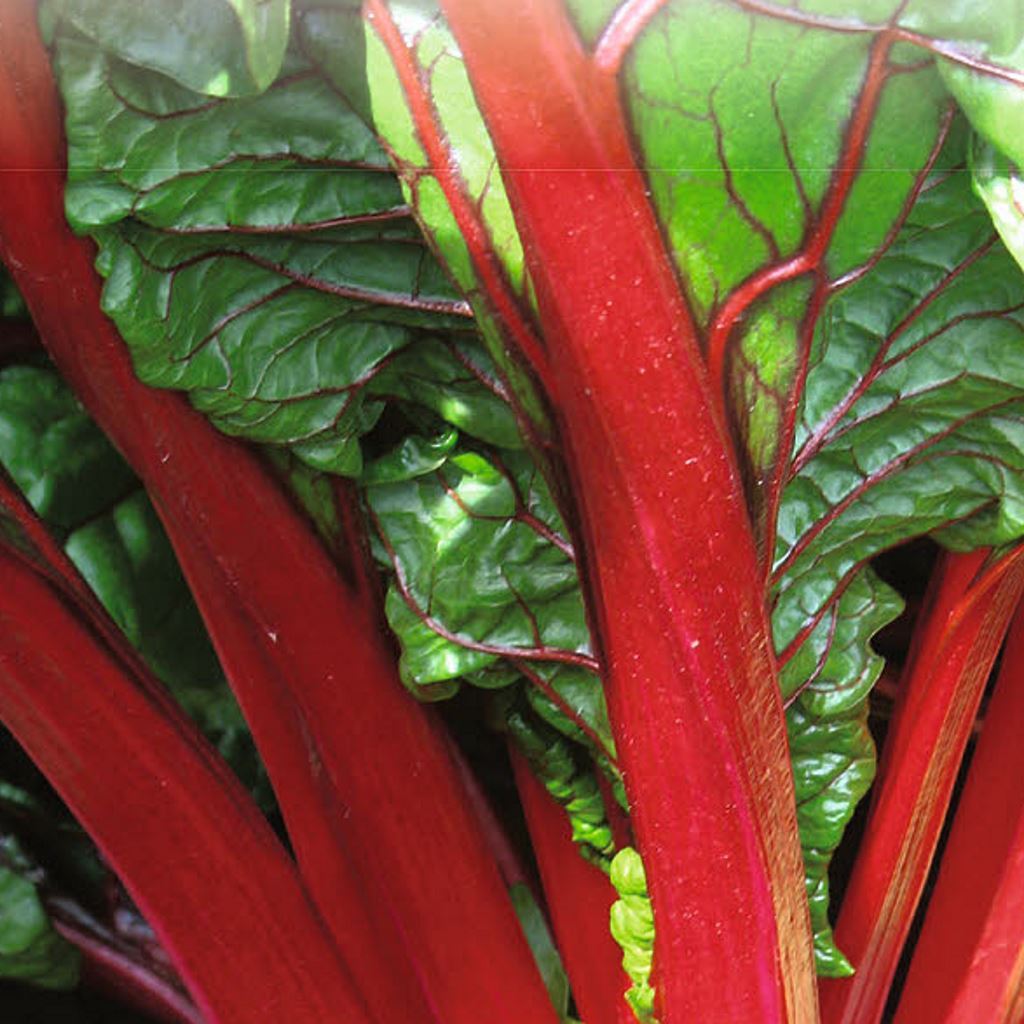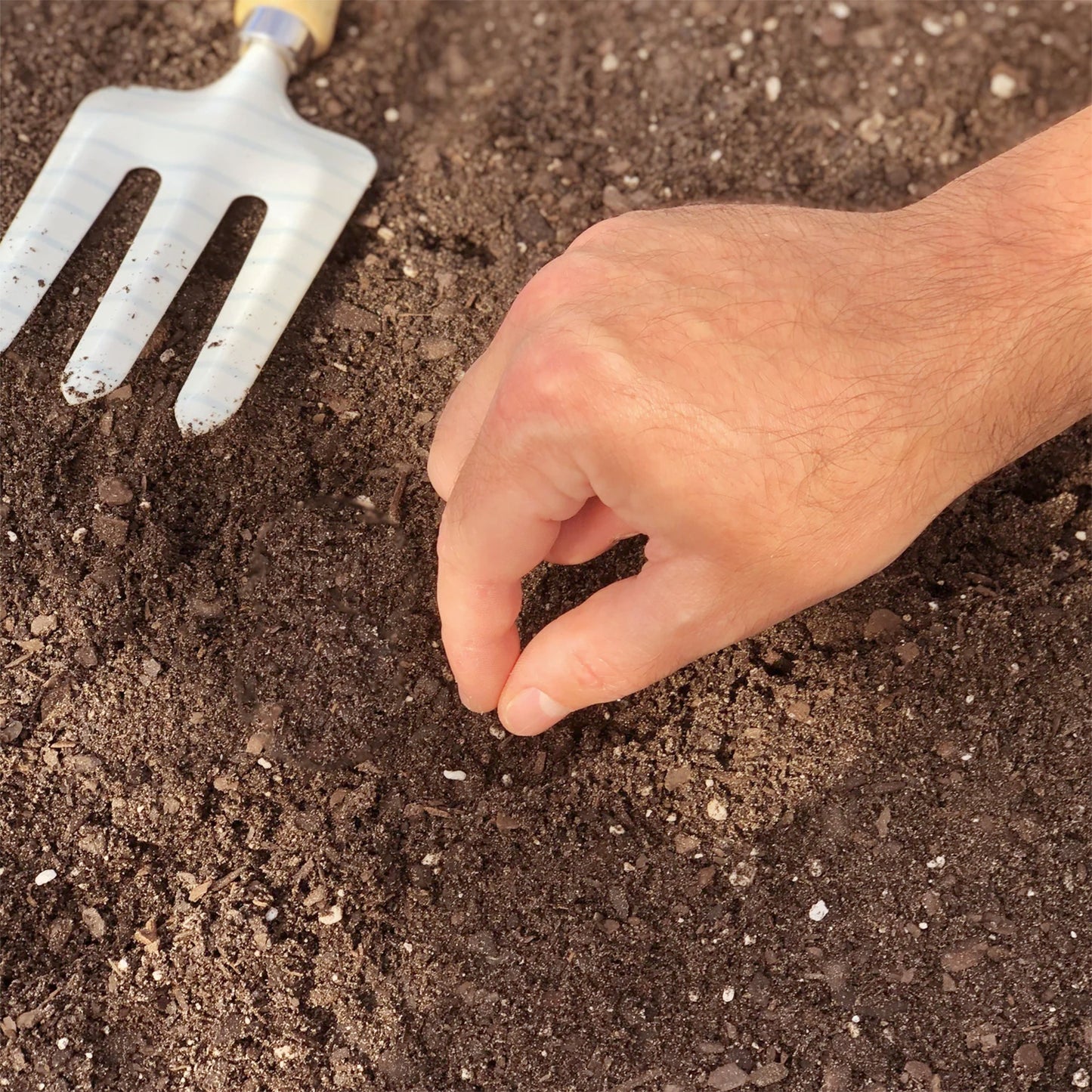Growing Instructions:
Swiss chard should be sown directly into the garden when the soil is warm and all danger of frost is past. To speed up germination, soak seeds overnight in room temperature water before planting. Soil temperature (not air temperature) should be between 13-24°C (55-75°F) . Space seeds and plant to the depth indicated below. Press seeds into the soil to ensure good contact and cover with 1.3 cm (1/2") of soil. After planting, water seeds with a gentle mist or shower. It is critical to keep the soil consistently moist, but not soggy during germination. When your seedlings reach a height of a few centimetres (inches) and have developed 2 or 3 pairs of leaves, it is important to thin them out, according to the plant spacing indicated below. Thinnings can be used as fresh greens. Do not allow the soil to become dry, as young plants have underdeveloped roots and can quickly dehydrate, particularly in windy conditions. Swiss chard grows quickly and more seeds can be succession planted every 10 days for 4 weeks for a continuous supply of fresh chard.
Click here to read more information on planning and planting a garden.
- Planting Depth: 1.3 cm (1/2")
- Seed Spacing: Sow swiss chard seeds roughly 2.5 cm (1") apart in rows, keeping rows approximately 45 cm (18") apart.
- Plant Spacing: 25 cm (10")
-
Instructions for Nutrient Care:
Feed plants SUPERthrive once per week. Mix 1.2 ml (1/4 tsp) per 4L (1 gallon) of water in a watering can and apply solution to the base of the plants.















